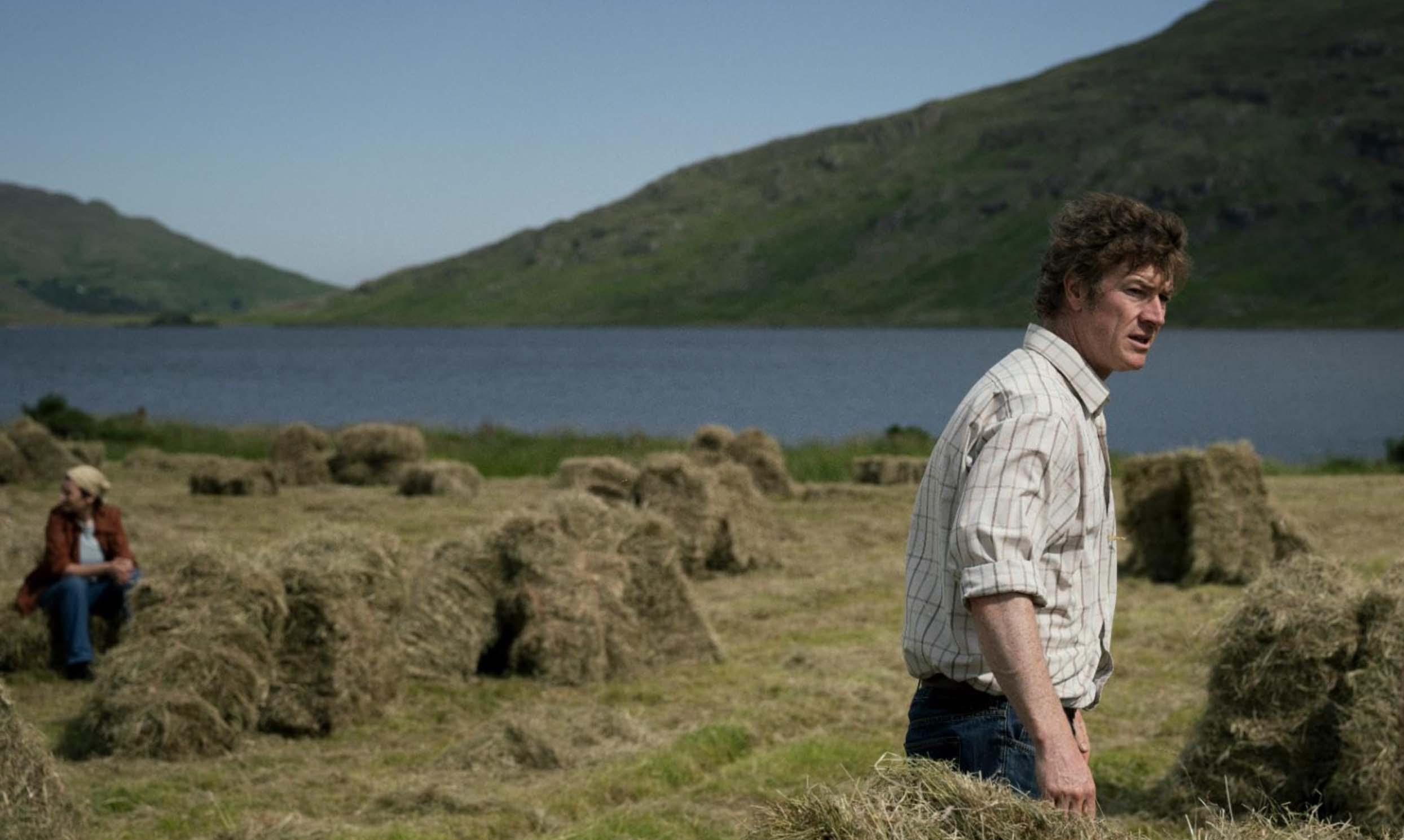- Film And TV
- 25 Apr 24

Director Pat Collins on his adaptation of John McGahern’s acclaimed novel That They May Face The Rising Sun, which powerfully explores life in rural Ireland.
Pat Collins is one of Ireland’s most prolific and thoughtful directors, having made over 30 films in the past two decades. Hailing from West Cork, the director has made many documentaries, while features like Song Of Granite, Silence and 2019’s Herny Glassie: Field Work are known for their meditative tone. They invite the viewer to slow down, pay attention and relish the beauty of everyday details.
Such a stylistic approach made Collins the ideal director to adapt John McGahern’s 2002 novel, That They May Face The Rising Sun, which is set in the late ’70s. In the film, Barry Ward and Anna Bederke respectively play Joe, a writer, and Anna, an artist. Having left London five years previously, they live a life of quiet contentment, appreciating the beauty of their surroundings. But in the lives of the older neighbours around them, there are struggles and conflicts, mainly caused by poverty, loneliness and generational traumas.
Collins knows the novel intimately. He started filming his documentary, John McGahern: A Private World about 20 years ago this month, bringing a lovely circularity to the release of his adaptation. The author had already released That They May Face The Rising Sun – his final novel – which immediately connected with Collins.
“Maybe it’s because it was so accurate, and close to what country life was like at that time, it just resonated with me,” says the director, though it took him years to believe he had the skills to adapt it. “It’s material that isn’t exactly hugely dramatic; it’s very small stories playing out and the book is meditative. Time passing is one of the major themes, which just doesn’t exactly excite funders!”

Advertisement
The sense of time passing is shown in Collins’ delicate pacing; Anna’s learning of disappearing skills such as weaving and separating wool; and how older neighbours, such as the volatile Patrick (Lalor Roddy), struggle against how the world is changing. McGahern’s novel feels so real because the author often based his characters on real people, and Collins wanted to retain that sense of authenticity.
“The real trick for films that are set in rural Ireland is not to exaggerate character,” he says. “It’s very easy to tip the balance into a kind of parody. Obviously, I’m from that world myself, so I’m very sensitive to it. I would be very conscious of trying to represent these characters, because they are in every village, town and country. There’s a great book called Remembering Peasants by Patrick Joyce, where he’s comparing Italy, Poland, Ireland and Slovakia, and the similarities are very strong.
“In Ireland, we probably don’t like to use the word ‘peasant’, but it’s essentially true. These societies had specific rituals and ways of living, and a set of manners you had to live by. Some people obviously suffered more than others, by those rules being silently enforced.”
Collins’ film shows how these rules persist, as characters who were born out of wedlock, or grew up in industrial schools, still suffer. Then there are characters like Parick, who are intelligent and artistic, but didn’t grow up with opportunities to express themselves.
“He represents more than what he is as an individual as well,” says Collins. “There’s an old Gaelic character who has an artistic temperament, and those kind of characters are often written off as being just a template. But they’re as complex as any character. He remembers a time when life was full of possibilities, whereas as he’s getting older, it’s kind of closing down on him. In a way, he’s more complex than I understand as well.”
Several recent Irish films, such as An Cailín Ciúin and the adaptation of Claire Keegan’s Small Things Like These, are set in the late ’70s and ’80s. For Collins, the desire to look back on this time is perhaps about looking at how we used to connect without phones or technology.
“If you wanted something, you had to go to the person’s house,” he reflects. “Of course, that’s more interesting than people being isolated and texting. So the communication is more visible and on the surface. It’s very easy for people to withdraw into themselves now. But I wanted to look at community; I’m not drawn to story in the same way other people might be.
Advertisement
“I’m more interested in portraying that society as a community, rather than necessarily telling an individual story. What I’m trying to do is create an ensemble of actors to create a community, and I felt it might be the last chance to actually do that. I don’t think anybody in 15 years will want to do that, because there will be too much of a disconnect. Less and less people will have experienced it, so I felt a self-imposed responsibility to show this story now.”
•That They May Face The Rising Sun is in cinemas from April 26.










